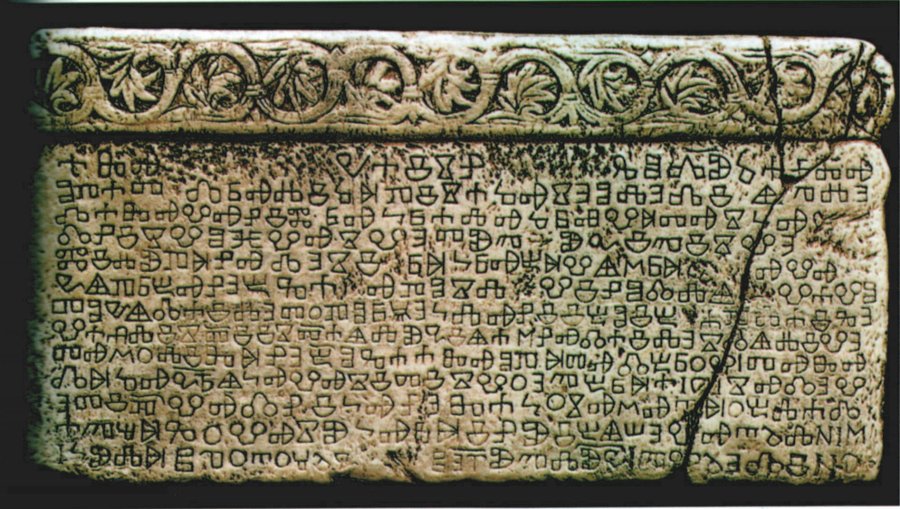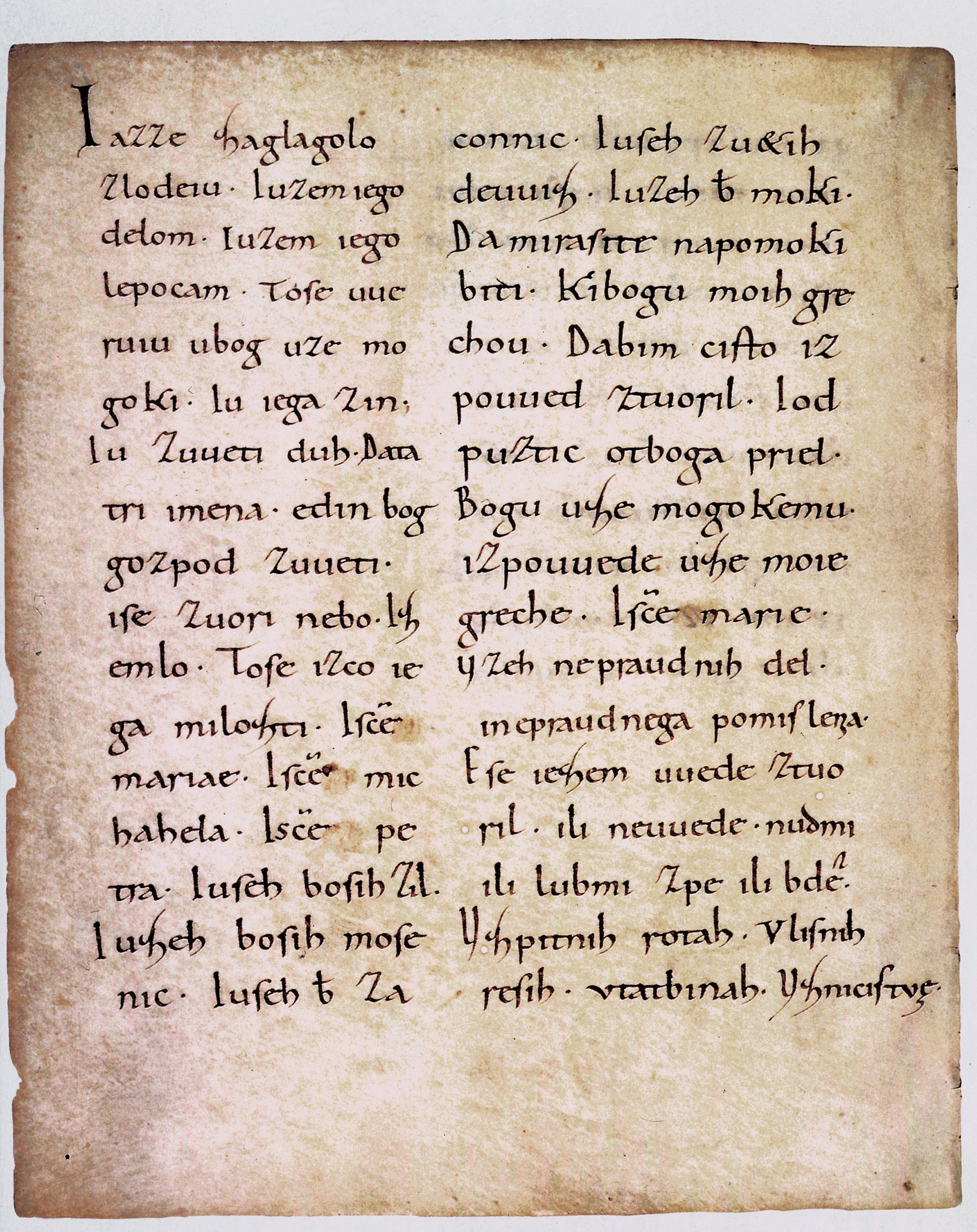|
Knyaz
, or ( Old Church Slavonic: Кнѧзь) is a historical Slavic title, used both as a royal and noble title in different times of history and different ancient Slavic lands. It is usually translated into English as prince or duke, depending on specific historical context and the potentially known Latin equivalents of the title for each bearer of the name. In Latin sources the title is usually translated as , but the word was originally derived from the common Germanic (king). The female form transliterated from Bulgarian and Russian is (), in Slovene and Serbo-Croatian (Serbian Cyrillic: ), ''kniahinia'' (княгіня) in Belarusian and ''kniazioŭna'' (князёўна) is the daughter of the prince, (княгиня) in Ukrainian. In Russian, the daughter of a knyaz is (). In Russian, the son of a knyaz is ( in its old form). The title is pronounced and written similarly in different European languages. In Serbo-Croatian and some West Slavic languages, the ... [...More Info...] [...Related Items...] OR: [Wikipedia] [Google] [Baidu] |
Prince
A prince is a male ruler (ranked below a king, grand prince, and grand duke) or a male member of a monarch's or former monarch's family. ''Prince'' is also a title of nobility (often highest), often hereditary, in some European states. The female equivalent is a princess. The English word derives, via the French word ''prince'', from the Latin noun , from (first) and (head), meaning "the first, foremost, the chief, most distinguished, noble ruler, prince". Historical background The Latin word (older Latin *prīsmo-kaps, literally "the one who takes the first lace/position), became the usual title of the informal leader of the Roman senate some centuries before the transition to empire, the '' princeps senatus''. Emperor Augustus established the formal position of monarch on the basis of principate, not dominion. He also tasked his grandsons as summer rulers of the city when most of the government were on holiday in the country or attending religious ritua ... [...More Info...] [...Related Items...] OR: [Wikipedia] [Google] [Baidu] |
Duke
Duke is a male title either of a monarch ruling over a duchy, or of a member of royalty, or nobility. As rulers, dukes are ranked below emperors, kings, grand princes, grand dukes, and sovereign princes. As royalty or nobility, they are ranked below princess nobility and grand dukes. The title comes from French ''duc'', itself from the Latin '' dux'', 'leader', a term used in republican Rome to refer to a military commander without an official rank (particularly one of Germanic or Celtic origin), and later coming to mean the leading military commander of a province. In most countries, the word ''duchess'' is the female equivalent. Following the reforms of the emperor Diocletian (which separated the civilian and military administrations of the Roman provinces), a ''dux'' became the military commander in each province. The title ''dux'', Hellenised to ''doux'', survived in the Eastern Roman Empire where it continued in several contexts, signifying a rank equivalent to a c ... [...More Info...] [...Related Items...] OR: [Wikipedia] [Google] [Baidu] |
European Languages
Most languages of Europe belong to the Indo-European language family. Out of a total European population of 744 million as of 2018, some 94% are native speakers of an Indo-European language. Within Indo-European, the three largest phyla are Romance, Germanic, and Slavic, they have more than 200 million speakers each and together account for close to 90% of Europeans. Smaller phyla of Indo-European found in Europe include Hellenic ( Greek, 13 million), Baltic ( 7 million), Albanian ( 5 million), Celtic ( 4 million), Armenian ( 4 million) and Indo-Aryan (Romani, 1.5 million). Of the approximately 45 million Europeans speaking non-Indo-European languages, most speak languages within either the Uralic or Turkic families. Still smaller groups — such as Basque (language isolate), Semitic languages ( Maltese, 0.5 million), and various languages of the Caucasus — account for less than 1% of the European population between them. Immigration has added sizeable communities ... [...More Info...] [...Related Items...] OR: [Wikipedia] [Google] [Baidu] |
Former Yugoslavia
The Socialist Federal Republic of Yugoslavia, commonly referred to as SFR Yugoslavia or simply as Yugoslavia, was a country in Central and Southeast Europe. It emerged in 1945, following World War II, and lasted until 1992, with the breakup of Yugoslavia occurring as a consequence of the Yugoslav Wars. Spanning an area of in the Balkans, Yugoslavia was bordered by the Adriatic Sea and Italy to the west, by Austria and Hungary to the north, by Bulgaria and Romania to the east, and by Albania and Greece to the south. It was a one-party socialist state and federation governed by the League of Communists of Yugoslavia, and had six constituent republics: Bosnia and Herzegovina, Croatia, Macedonia, Montenegro, Serbia, and Slovenia. Within Serbia was the Yugoslav capital city of Belgrade as well as two autonomous Yugoslav provinces: Kosovo and Vojvodina. The SFR Yugoslavia traces its origins to 26 November 1942, when the Anti-Fascist Council for the National Liberation of Yugoslavi ... [...More Info...] [...Related Items...] OR: [Wikipedia] [Google] [Baidu] |
Knez (surname)
{{surname, Knez ...
Knez or Knyaz is a South Slavic surname, coming from the title ''knez''. It may refer to: * Dejan Knez, a Slovenian artist * Tomislav Knez, a Bosnian footballer * Iván Knez, an Argentine-Swiss footballer * Nikodim Tsarknias (''Tsar-Knyaz''), a Macedonian Eastern Orthodox priest in Greece Greece,, or , romanized: ', officially the Hellenic Republic, is a country in Southeast Europe. It is situated on the southern tip of the Balkans, and is located at the crossroads of Europe, Asia, and Africa. Greece shares land borders wi ... [...More Info...] [...Related Items...] OR: [Wikipedia] [Google] [Baidu] |
Serbian Literature
Serbian literature ( sr-Cyrl, Српска књижевност), refers to literature written in Serbian and/or in Serbia and all other lands where Serbs reside. The history of Serbian literature begins with the independent works from the Nemanjić dynasty era, if not before. With the fall of Serbia and neighboring countries in the 15th century, there is a gap in the literary history in the occupied land. Serbian literature, however, continued uninterrupted in Serbian-inhabited lands under European rule and saw a revival with Baroque works published in the 18th century in what is today Vojvodina. Serbia gained independence following the Serbian Revolution (1804–1815) and Serbian literature has since prospered. Several Serbian writers have achieved international fame. History Medieval and post-medieval literature ;Medieval Old Church Slavonic literature was created based on the Byzantine model since the time of Constantine the Great, to be exact. At first, ch ... [...More Info...] [...Related Items...] OR: [Wikipedia] [Google] [Baidu] |
Croatian Literature
Croatian literature refers to literary works attributed to the medieval and modern culture of the Croats, Croatia, and Croatian. Besides the modern language whose shape and orthography was standardized in the late 19th century, it also covers the oldest works produced within the modern borders of Croatia, written in Church Slavonic and Medieval Latin, as well as vernacular works written in Čakavian and Kajkavian dialects. History Croatian medieval literature Croatian medieval prose is similar to other European medieval literature of the time. The oldest testaments to Croatian literacy are dated to the 11th and 12th centuries, and Croatian medieval literature lasts until the middle of the 16th century. Some elements of medieval forms can be found even in 18th century Croatian literature, which means that their influence had been stronger in Croatia than in the rest of Europe. Early Croatian literature was inscribed on stone tablets, hand-written on manuscripts, and printed in ... [...More Info...] [...Related Items...] OR: [Wikipedia] [Google] [Baidu] |
Bosnian Literature
The culture of Bosnia and Herzegovina encompasses the country's ancient heritage, architecture, literature, visual arts, music, cinema, sports and cuisine. Ancient cultural heritage The rock-carving by an artist found in Badanj Cave near the city of Stolac dates back to Paleolithic times (c. 12,000 and 16,000 BCE). It represents the death of a horse under a rain of arrows. It is the oldest Paleolithic finding in southeast Europe. There is also a rich legacy of Neolithic culture in Bosnia and Herzegovina. Particularly beautiful items have been found in Butmir near Sarajevo (5000 BC). During the Bronze Age, the territory of Bosnia and Herzegovina was occupied by Illyrian tribes such as the Japods in Bihać and the Daors in Daorson, near Stolac. They were directly influenced by the Greeks, as seen in Daorson especially. The Illyrians were conquered by the Romans, who left roads, bridges, and beautiful villas with mosaics all over Bosnia and Herzegovina. The best preserved exa ... [...More Info...] [...Related Items...] OR: [Wikipedia] [Google] [Baidu] |
Slovenian Literature
Slovene literature is the literature written in Slovene. It spans across all literary genres with historically the Slovene historical fiction as the most widespread Slovene fiction genre. The Romantic 19th-century epic poetry written by the leading name of the Slovene literary canon, France Prešeren, inspired virtually all subsequent Slovene literature. Literature played an important role in the development and preservation of the Slovene identity because the Slovene nation did not have its own state until 1991 after the Republic of Slovenia emerged from the breakup of Yugoslavia. Poetry, narrative prose, drama, essay, and criticism kept the Slovene language and culture alive, allowing - in the words of Anton Slodnjak - the Slovenes to become a real nation, particularly in the absence of masculine attributes such as political power and authority. Early literature There are accounts that cite the existence of an oral literary tradition that preceded the Slovene written lite ... [...More Info...] [...Related Items...] OR: [Wikipedia] [Google] [Baidu] |
Monsignor
Monsignor (; it, monsignore ) is an honorific form of address or title for certain male clergy members, usually members of the Roman Catholic Church. Monsignor is the apocopic form of the Italian ''monsignore'', meaning "my lord". "Monsignor" can be abbreviated as Mons... or Msgr. In some countries, the title "monsignor" is used as a form of address for bishops. However, in English-speaking countries, the title is dropped when a priest is appointed as bishop. The title "monsignor" is a form of address, not an appointment (such as a bishop or cardinal). A priest cannot be "made a monsignor" or become "the monsignor of a parish". The title "Monsignor" is normally used by clergy (men only) who have received one of the three classes of papal honors: * Protonotary apostolic (the highest honored class) * Honorary prelate * Chaplain of his holiness (the lowest honored class) The pope bestows these papal honors upon clergy who: * Have rendered a valuable service to the church * ... [...More Info...] [...Related Items...] OR: [Wikipedia] [Google] [Baidu] |
Sorbian Languages
The Sorbian languages ( hsb, serbska rěč, dsb, serbska rěc) are the Upper Sorbian language and Lower Sorbian language, two closely related and partially mutually intelligible languages spoken by the Sorbs, a West Slavic ethno-cultural minority in the Lusatia region of Eastern Germany. They are classified under the West Slavic branch of the Indo-European languages and are therefore closely related to the other two West Slavic subgroups: Lechitic and Czech–Slovak.About Sorbian Language by Helmut Faska, University of Leipzig Historically, the languages have also been known as Wendish (named after the [...More Info...] [...Related Items...] OR: [Wikipedia] [Google] [Baidu] |





_dancing_-_Bosnia_and_Herzegovina_1895.jpg)

